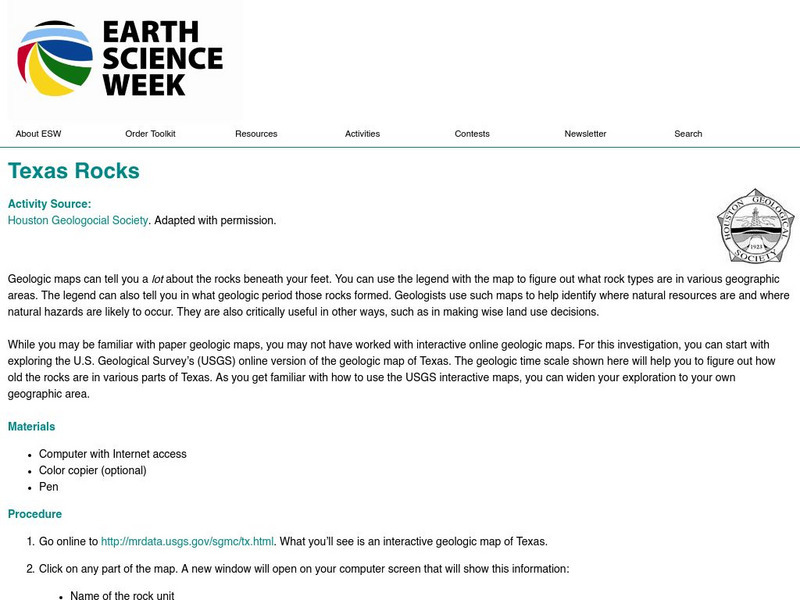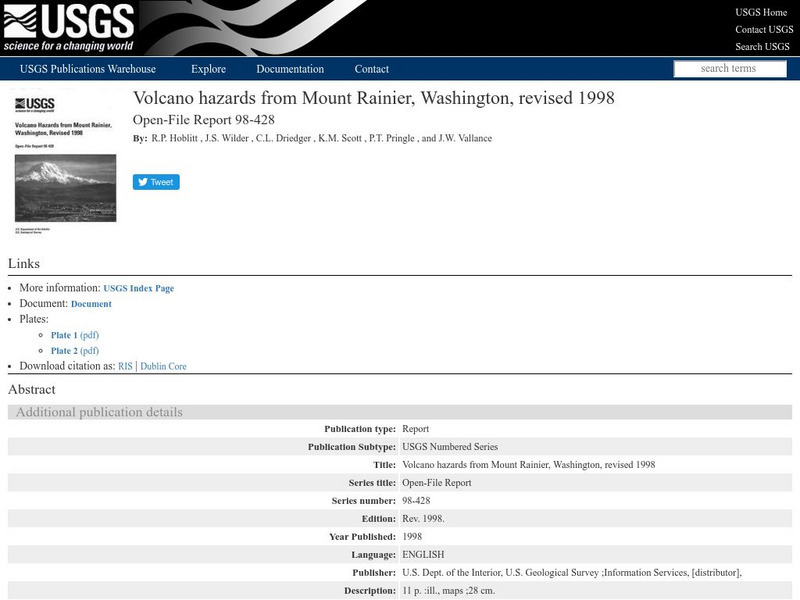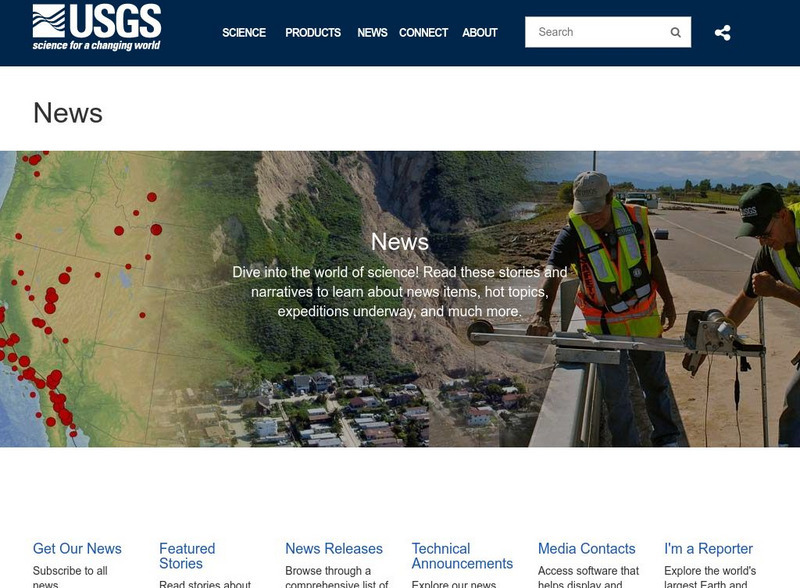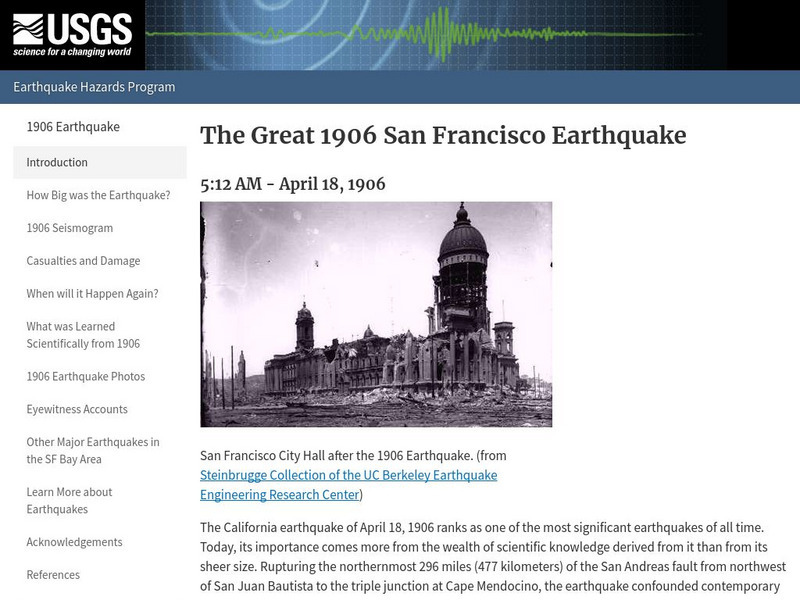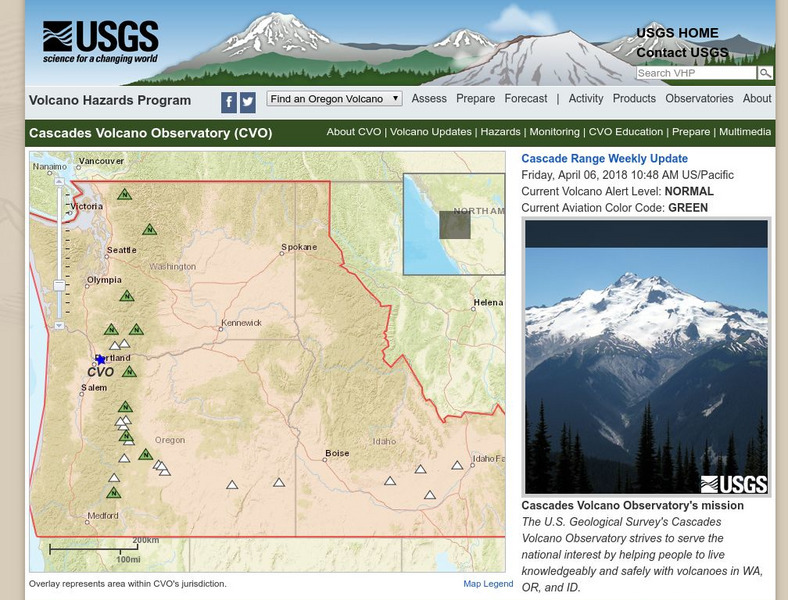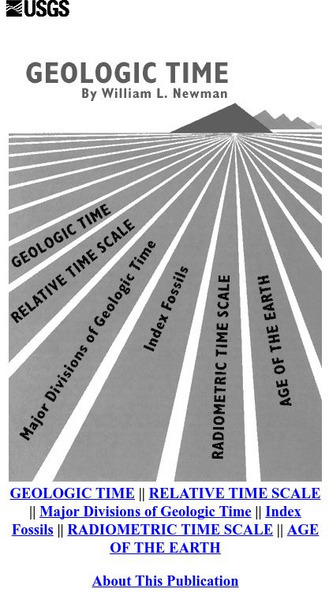American Geosciences Institute
American Geosciences Institute: Earth Science Week: Texas Rocks
For this investigation, students start exploring the U.S. Geological Survey's (USGS) online version of the geologic map of Texas. The geologic time scale shown will help them figure out how old the rocks are in various parts of Texas.
US Geological Survey
Us Geological Survey: Potential Hazards of Mt. Rainier
Mt. Rainier first erupted a million years ago. Find out all about its eruptive history and potential hazards that could threaten people today.
US Geological Survey
Us Geological Survey: Wolverine Glacier
Learn about the history, mass balance and meteorlogical data, and view several photos of the Wolverine Glacier.
US Geological Survey
Usgs: 2004 Deadliest in Nearly 500 Years for Earthquakes
The USGS provides the facts and figures on 2004's earthquakes, which is the second most fatal in recorded history.
US Geological Survey
U.s. Geological Survey: The Great 1906 San Francisco Earthquake
General information about the San Francisco earthquake, as well as some information about how studying that earthquake helped scientists in learning more about when and where earthquakes will occur.
US Geological Survey
U.s. Geological Survey: Earthquake Lists, Maps, and Statistics
All kinds of earthquake data compiled here. Find the deadliest earthquakes, most damaging earthquakes, world and US statistics, historical earthquake lists, and more.
US Geological Survey
U.s. Geological Survey: Volcano Hazards Program: Cascades Volcanoes Observatory
Information about all the volcanoes in the Cascades, which range from Canada in the north to California in the south.
US Geological Survey
U.s. Geological Survey: 1906 Marked the Dawn of the Scientific Revolution
This site contains information about we have learned about the San Andreas Fault since 1906.
US Geological Survey
Hawaiian Volcano Observatory: Mauna Loa Earth's Largest Volcano
Mauna Loa means long mountain, and it is the largest and most active volcano on earth. Get some good overall facts regarding this infamous volcano.
US Geological Survey
U.s. Geological Survey: Search
The U.S. Geological Survey offers information for teachers and students interested on Earth Science research. Contains references to general information as well as current research and events.
US Geological Survey
U.s. Geological Survey: Today in Earthquake History
Updated daily, this page describes any notable earthquakes that happened on this day in history. Each earthquake has a link to more information about what happened on that particular day.
US Geological Survey
Usgs: Real Time Water Data for the Nation
This interactive map of the US allows you to select among numerous streams and rivers to determine their current flow rate.
US Geological Survey
Usgs: Tsunami & Earthquake Research
The USGS provides an extensive section of information about tsunamis. The items presented are the basics of tsunamis regarding the Great San Francisco earthquake of April 18, 1906, tsunamis in the U.S. Pacific Northwest, and the 1998...
US Geological Survey
Usgs: Geologic Time
This large U.S. Geological Survey site offers a look at the age of the earth, how radiometric dating is used to calculate it, the major divisions of geologic time, and the classification and use of fossils.
US Geological Survey
Usgs: Earth's Water Surface Water
This site has everything you might want to know about surface water and things you probably didn't even imagine! Click Home to access the site in Spanish.
US Geological Survey
U.s. Geological Survey: Where Is Earth's Water Located?
Find out how much of the water on Earth is actually usable by humans, and where the rest of it is located. Learn where our water comes from and why it never runs out. Click Home to access the site in Spanish.
US Geological Survey
Central California Earthquake Hazards Project
Here is a review of the geology behind earthquakes and what is being done to predict the "Big One" on the San Andreas Fault.
Apple
Us Atlas Geology
Apple provides a description of the USAtlas Geology app, developed by the USGS. The app provides 46 layers of vector information available at The National Atlas of the United States Website.
US Geological Survey
Usgs: Water Quality of San Francisco Bay
This resource from the United State Geological Survey provides data about San Francisco Bay's water quality. Data is displayed in time series plots, vertical profiles, longitudinal sections, space and time contours, and x-y scatter plots.
US Geological Survey
Us Geological Survey: Saturn Satellites
This resource provides images of Saturns satellites.
US Geological Survey
United States Geological Survey: Apollo Mission Lunar Panoramas
View interactive panoramic views taken by Apollo missions 11, 12, 14, 16 and 17. You can zoom in on each panoramic to see more detail.
US Geological Survey
Usgs: Energy Resources Program
Find the latest research and publications on the subject of energy, in particular: oil, gas and coal resources.
US Geological Survey
Usgs: Mount St. Helens Elevation
See a three-sixty view of the post-eruption elevation of Mount Saint Helens.
US Geological Survey
Usgs: Schoolyard Geology
The purpose of this lesson plan is to provide teachers with some activities they can do on school grounds. Activities include mapping, describing sedimentary rocks, and solving a mystery.


